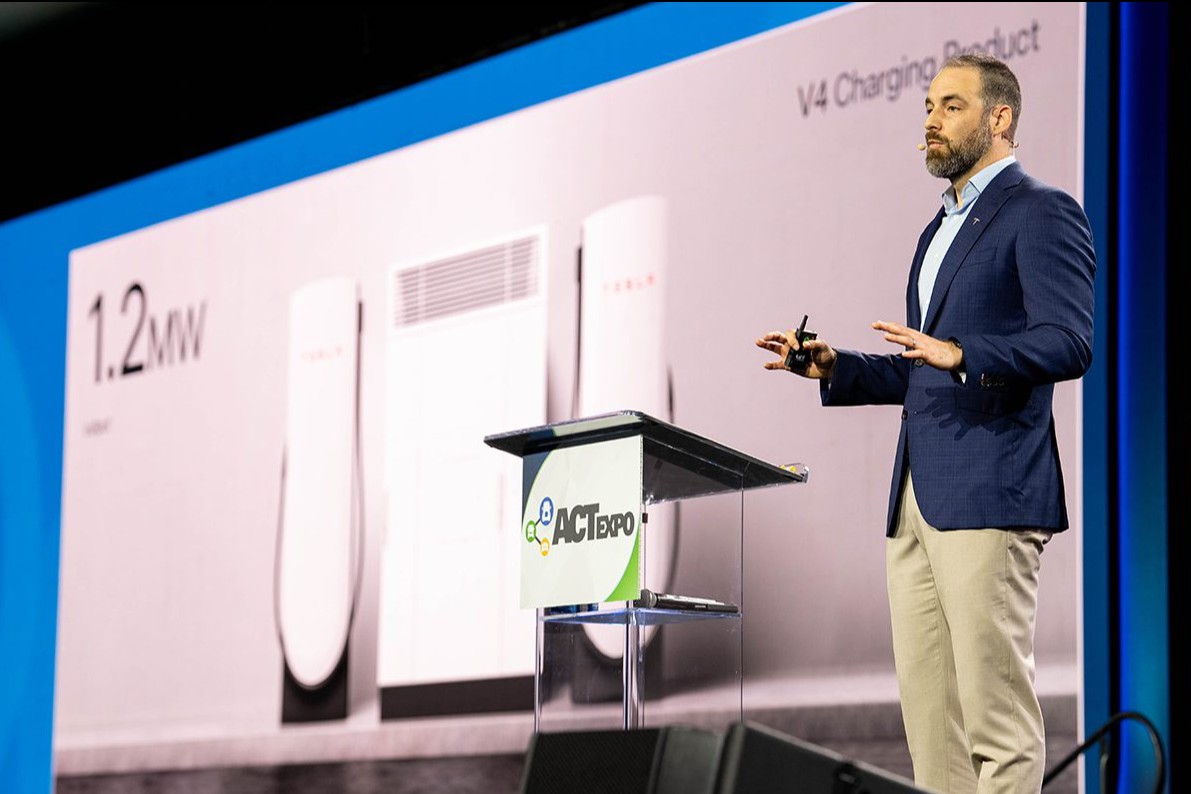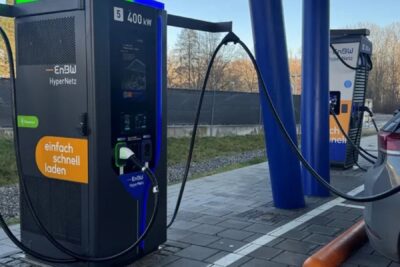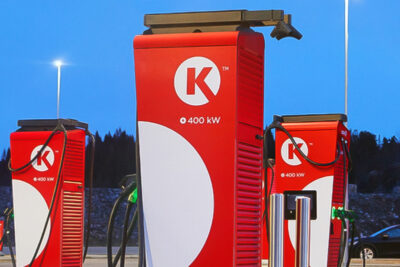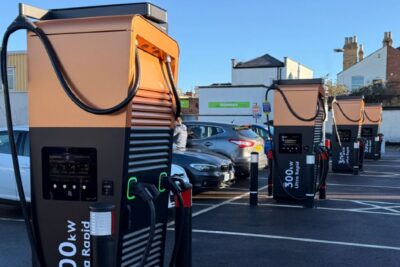Tesla announces scalable 1.2 MW charging solution for Semi fleet rollout
During his presentation at the Advanced Clean Transportation Expo (ACT) in California, Dan Priestley, who leads the Semi programme at Tesla, detailed the next phase in the company’s electrification strategy. Central to this is the launch of Tesla’s V4 charging architecture, delivering up to 1.2 megawatts of power through a compact, modular charging unit. The new hardware, shared with Tesla’s passenger car charging systems, leverages existing scale to reduce costs and improve deployment speed.
“Most of the internals are exactly the same, just the cable and the connector and a few other little bits are adapted for heavy-duty applications,” Priestley explained. “But it allows us to both use our volume and scale to deploy charging for less, but also brings in reliability and uptime that those that have used the Supercharge network have come to depend on.”
Compared to the current charging systems for electric trucks, Tesla’s new solution cuts the equipment footprint by over 50%, helping operators maximise valuable yard space. It is highly configurable, offering dedicated 1.2 MW posts for high-speed turnaround or scalable power-sharing configurations supporting up to eight vehicles charging simultaneously.
Despite its understated appearance – or as Priestley puts it: “Don’t be fooled by the fact that it’s just a simple looking box” – the system integrates ‘next level engineering’ for efficient power conversion, cost reduction, and flexible deployment—addressing both operator and landowner needs.
A major advantage is service integration: Tesla will maintain these heavy-duty chargers using the same service teams, procedures, and parts used for its passenger car charging network. “That network has an uptime of more than 99.95% reliability. And that is an experience that we want to bring over to the heavy-duty side,” said Priestley.
First public charging hubs under construction
He added that 46 public charging locations for the Semi are already underway across key logistics corridors, collectively hosting over 300 MW-capable charging posts. These locations, strategically placed along freight routes and in industrial zones, are expected to enter service this year, with additional sites in the pipeline for 2026.
“Our internet sleuths have already spotted some of these,” Priestley quipped, hinting at Tesla’s traditionally stealthy rollout methods. “But we’re just getting started.”
Tesla is also developing an overnight charging solution tailored for fleets operating on fixed schedules, enabling lower-cost, off-shift energy use. This dual approach – fast and overnight charging – ‘enables a really great TCO’, said the Tesla manager.
While private charging is often the most cost-effective and efficient option, Tesla recognises it’s not feasible for all fleets—especially those with limited space, leased facilities, or power constraints. Hence, the public charging network will act both as a primary solution and as a transitional tool while private infrastructure or utility upgrades are completed.
“Public charging can serve as a range extension option for fleets that want to go farther than domicile charging alone would allow,” Priestley said. “It also can serve as a bridge solution while we’re waiting for infrastructure or utility or even just general facility upgrades […] We aim to offer the lowest cost of energy to ensure significantly lower operating cost than diesel. This is key.”
Priestley emphasised that Tesla’s goal is to ensure that every Tesla Semi has access to low-cost, reliable, and readily available charging – regardless of fleet type, location, or operating model. In a video posted ahead of his talk, Tesla announced that the first Semi electric trucks will roll off the production line at the Gigafactory in Nevada, which has an annual capacity of 50,000 units. Production will be ramped up next year.
“We need partners to go along this journey with us. Come collaborate with our business development team so that we can help provide a solution for you,” Priestley concluded his talk at the ACT. “The future is bright. And it’s electric.”
youtube.com (keynote; video), youtube.com (Tesla Semi update; video)





0 Comments